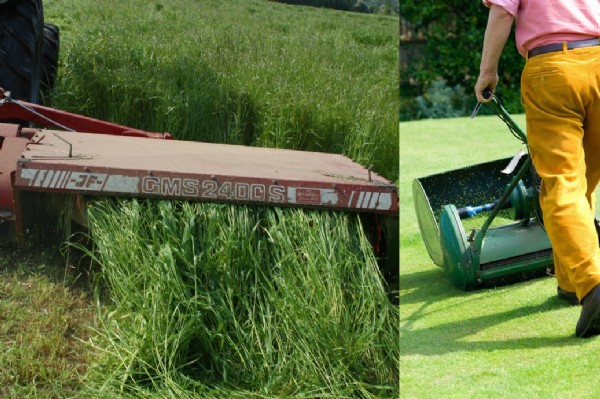

There are big differences between the types of seed mixtures we use for agricultural purposes, such as hay, silage and grazing, and those that we advise for amenity use, such as landscaping or lawn situations. The size of the area and the use or desired finish can have a big impact on the amount and type of seed required, with associated differences in the cost.
We utilise very different species for each purpose, for example agricultural Ryegrasses are very good for providing high yielding, tall, bulky crops of silage. While some other species like the fine leaved Fescues or Dwarf Perennial Ryegrass are suited to providing a dense uniform lawn turf, which would be unsuitable for agricultural production.
Another important difference between an agricultural grass mixture and amenity is the sowing rate that is used. This can have a major impact on the overall cost of a seed mixture, especially if large areas are to be sown.
Generally speaking the grasses used in agricultural situations, such as Perennial Ryegrass, Cocksfoot and Timothy, have a tall, bulky, growth habit, with the ability to tiller out and produce more leaves as they grow.
These agricultural mixtures are often sown at a sowing rate of 10-15 kg per acre (3.25 g/m²). The ability of these species to tiller out with leafy growth allows them to fill in the gaps between each plant, compensating for the low plant population.
The grasses used in the amenity sector are usually much smaller and lower growing, with the aim of providing a dense uniform turf, which can be regularly mown or kept short and presentable. This means they are less able to tiller out and fill in the spaces between each plant, if sown at a low sowing rate.
The amenity mixtures for lawns and landscape situations will have much higher sowing rates, typically from 15 – 70 g/ m² (60- 280 kgs per acre), to make up for the fact that they do not fill out as well as the agricultural strains.
Additionally these types of mixtures are often used for areas that will receive pressure from foot traffic, to stop the area turning to mud, a dense sward of turf is needed. Similarly a prestigious lawn area needs a thick, uniform turf, again this can only be achieved with a robust sowing rate.
If the wrong mixture is sown at a sowing rate that is too low, the result can be a thin sward with gaps between each plant, this can allow weeds to become an issue and looks much less attractive. Conversely sowing an amenity mixture at a high sowing rate creates a denser sward and helps the area to ‘green up’ more quickly.
The difficult situation arises when amenity mixtures are required for larger areas (one - two acres plus), because the high sowing rate required for these mixtures over a large area can make them look costly and uneconomical.
If you are sowing a large area with this type of mixture it is advisable to measure the area accurately in metres squared (remembering that 2000m² is half an acre) because overestimating the area can have a big impact on the overall cost of the project!
Usually we advise a sowing rate of at least 50kg per acre (15gs/m²) for amenity mixtures which are used over large areas, to strike a balance between good coverage and an economic sowing rate, however this can be increased for a denser sward and quicker green coverage.
Speak to our advisers for more help and advice on this topic.
Date Posted: 30th March 2017




